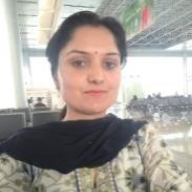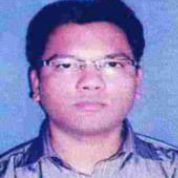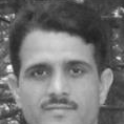International Journal of Image, Graphics and Signal Processing (IJIGSP)
IJIGSP Vol. 17, No. 3, 8 Jun. 2025
Cover page and Table of Contents: PDF (size: 1650KB)
Pelican Optimization based Histogram Equalization for Contrast Enhancement and Brightness Preservation
PDF (1650KB), PP.12-33
Views: 0 Downloads: 0
Author(s)
Index Terms
Conventional Histogram Equalization, Image Contrast enhancement, Local Histogram Equalization, Meta-heuristic, Pelican Optimization Algorithm
Abstract
Image contrast is very important visual characteristics that will considerably improve the appearance of the image. In this paper image contrast is to be enhanced optimally to accurately portray all the data in the image using nature inspired meta-heuristic algorithms. Algorithms have been devised and proposed to enhance the contrast of low contrast images in this work. Poor image contrast caused by a low-quality capturing device, biased user experience, and an unsuitable environment setting during image capture is the main problem encountered during the image enhancement process. Histogram Equalization (HE), a frequently used technique for contrast enhancement, typically produces images with unwanted artifacts, an unnatural appearance, and washed-out appearances. The degree of enhancement is beyond the control of the global HE. The quality of an image is crucial for human comprehension, making image contrast enhancement (ICE) a crucial pre-processing stage in image processing and analysis. In the current study, the Pelican Optimization Algorithm, a contemporary meta-heuristic (MH) algorithm influenced by nature, is used as the foundation for the grayscale image contrast enhancement (GICE) approach (POA). The comparison of proposed method with existing contrast enhancement techniques has been done on the basis of standard image quality metrics. The proposed algorithm performance on standard test image and Kodak dataset demonstrates that total image contrast and information provided in the image are both greatly improved by the suggested POA-based image enhancement technique.
Cite This Paper
Niveditta Thakur, Nafis Uddin Khan, Sunil Datt Sharma, Abul Bashar, "Pelican Optimization based Histogram Equalization for Contrast Enhancement and Brightness Preservation", International Journal of Image, Graphics and Signal Processing(IJIGSP), Vol.17, No.3, pp. 12-33, 2025. DOI:10.5815/ijigsp.2025.03.02
Reference
[1]R. C. Gonzalez and R. E. Woods, Digital Image Processing, 4th ed. Upper Saddle River, NJ: Pearson, 2017.
[2]W. K. Pratt, Introduction to Digital Image Processing. London, England: CRC Press, 2013.
[3]J. B. Zimmerman, S. M. Pizer, E. V. Staab, J. R. Perry, W. McCartney, and B. C. Brenton, “An evaluation of the effectiveness of adaptive histogram equalization for contrast enhancement,” IEEE Trans. Med. Imaging, vol. 7, no. 4, pp. 304–312, 1988.
[4]K. Zuiderveld, “Contrast limited adaptive histogram equalization,” in Graphics Gems, Elsevier, 1994, pp. 474–485.
[5]J.-Y. Kim, L.-S. Kim, and S.-H. Hwang, “An advanced contrast enhancement using partially overlapped sub-block histogram equalization,” IEEE Trans. Circuits Syst. Video Technol., vol. 11, no. 4, pp. 475–484, 2001.
[6]K. Singh and R. Kapoor, “Image enhancement using Exposure based Sub Image Histogram Equalization,” Pattern Recognit. Lett., vol. 36, pp. 10–14, 2014.
[7]J. R. Tang and N. A. Mat Isa, “Intensity exposure-based bi-histogram equalization for image enhancement,” TURK. J. OF ELECTR. ENG. COMPUT. SCI., vol. 24, pp. 3564–3585, 2016.
[8]S. F. Tan and N. A. M. Isa, “Exposure based multi-histogram equalization contrast enhancement for non-uniform illumination images,” IEEE Access, vol. 7, pp. 70842–70861, 2019.
[9]Wu, Hao-Tian, Weiqi Mai, ShuyiMeng, Yiu-Ming Cheung, and Shaohua Tang, "Reversible data hiding with image contrast enhancement based on two-dimensional histogram modification," IEEE Access, vol. 7, pp. 83332-83342, 2019.
[10]A. K. Bhandari, S. Shahnawazuddin, and A. K. Meena, “A novel fuzzy clustering-based histogram model for image contrast enhancement,” IEEE Trans. Fuzzy Syst., vol. 28, no. 9, pp. 2009–2021, 2020.
[11]A. K. Bhandari, “A logarithmic law based histogram modification scheme for naturalness image contrast enhancement,” J. Ambient Intell. Humaniz. Comput., vol. 11, no. 4, pp. 1605–1627, 2020.
[12]B. Subramani and M. Veluchamy, “Fuzzy contextual inference system for medical image enhancement,” Measurement (Lond.), vol. 148, no. 106967, p. 106967, 2019.
[13]P. Tao, Y. Pei, M. Celenk, Q. Fu, and A. Wu, “Adaptive image enhancement method using contrast limitation based on multiple layers BOHE,” J. Ambient Intell. Humaniz. Comput., vol. 11, no. 11, pp. 5031–5043, 2020.
[14]Y.T. Kim, "Contrast enhancement using brightness preserving bi-histogram equalization." IEEE transactions on Consumer Electronics, vol. 43, no. 1, pp. 1-8, 1997.
[15]Y. Wang, Q. Chen, and B. Zhang, “Image enhancement based on equal area dualistic sub-image histogram equalization method,” IEEE Trans. Consum. Electron., vol. 45, no. 1, pp. 68–75, 1999.
[16]S. D. Chen and A. R. Ramli, ‘‘Minimum mean brightness error bihistogram equalization in contrast enhancement,’’ IEEE Trans. Consum. Electronics, vol. 49, no. 4, pp. 1310–1319, Nov. 2003.
[17]C. Zuo, Q. Chen, and X. Sui, “Range Limited Bi-Histogram Equalization for image contrast enhancement,” Optik (Stuttg.), vol. 124, no. 5, pp. 425–431, 2013.
[18]S. Poddar, S. Tewary, D. Sharma, V. Karar, A. Ghosh, and S. K. Pal, "Non‐parametric modified histogram equalisation for contrast enhancement," IET Image Processing, vol. 7, no. 7, pp. 641-652, 2013.
[19]K. Santhi and R. S. D. WahidaBanu, “Adaptive contrast enhancement using modified histogram equalization,” Optik (Stuttg.), vol. 126, no. 19, pp. 1809–1814, 2015.
[20]K. G. Dhal and S. Das, “Combination of histogram segmentation and modification to preserve the original brightness of the images,” Pattern Recognit. Image Anal., vol. 27, no. 2, pp. 200–212, 2017.
[21]T. L. Kong and N. A. M. Isa, “Bi-histogram modification method for non-uniform illumination and low-contrast images,” Multimed. Tools Appl., vol. 77, no. 7, pp. 8955–8978, 2018.
[22]E. Reddy and R. Reddy, “Dynamic clipped histogram equalization technique for enhancing low contrast images,” Proc. Nat. Acad. Sci. India Sect. A, vol. 89, no. 4, pp. 673–698, 2019.
[23]M. F. Khan, D. Goyal, M. M. Nofal, E. Khan, R. Al-Hmouz, and E. Herrera-Viedma, ‘‘Fuzzy-based histogram partitioning for bihistogramequalisation of low contrast images,’’ IEEE Access, vol. 8, pp. 11595–11614, 2020.
[24]L. Bai, W. Zhang, X. Pan, and C. Zhao, “Underwater image enhancement based on global and local equalization of histogram and dual-image multi-scale fusion,” IEEE Access, vol. 8, pp. 128973–128990, 2020.
[25]S. D. Chen and A. R. Ramli, “‘Contrast enhancement using recursive mean separate histogram equalization for scalable brightness preservation,” Trans. Consum. Electron, vol. 49, no. 4, pp. 1301–1309, 2003.
[26]K. S. Sim, C. P. Tso, and Y. Y. Tan, “Recursive sub-image histogram equalization applied to gray scale images,” Pattern Recognit. Lett., vol. 28, no. 10, pp. 1209–1221, 2007.
[27]M. Abdullah-Al-Wadud, M. Kabir, M. AkberDewan, and O. Chae, “A dynamic histogram equalization for image contrast enhancement,” IEEE Trans. Consum. Electron., vol. 53, no. 2, pp. 593–600, 2007.
[28]H. Ibrahim and N. Pik Kong, “Brightness preserving dynamic histogram equalization for image contrast enhancement,” IEEE Trans. Consum. Electron., vol. 53, no. 4, pp. 1752–1758, 2007.
[29]C. Ooi and N. Mat Isa, “Adaptive contrast enhancement methods with brightness preserving,” IEEE Trans. Consum. Electron., vol. 56, no. 4, pp. 2543–2551, 2010.
[30]C. Ooi and N. Mat Isa, “Quadrants dynamic histogram equalization for contrast enhancement,” IEEE Trans. Consum. Electron., vol. 56, no. 4, pp. 2552–2559, 2010.
[31]K. Singh and R. Kapoor, “Image enhancement via median-mean based sub-image-clipped histogram equalization,” Optik (Stuttg.), vol. 125, no. 17, pp. 4646–4651, 2014.
[32]A. S. Parihar and O. P. Verma, “Contrast enhancement using entropy‐based dynamic sub‐histogram equalisation,” IET Image Process., vol. 10, no. 11, pp. 799–808, 2016.
[33]P. Kandhway and A. K. Bhandari, “An optimal adaptive thresholding based sub-histogram equalization for brightness preserving image contrast enhancement,” Multidimens. Syst. Signal Process., vol. 30, no. 4, pp. 1859–1894, 2019.
[34]S. H. Majeed and N. A. M. Isa, “Iterated adaptive entropy-clip limit histogram equalization for poor contrast images,” IEEE Access, vol. 8, pp. 144218–144245, 2020.
[35]C. Ding, X. Pan, X. Gao, L. Ning, and Z. Wu, “Three adaptive sub-histograms equalization algorithm for maritime image enhancement,” IEEE Access, vol. 8, pp. 147983–147994, 2020.
[36]S. Hashemi, S. Kiani, N. Noroozi, and M. E. Moghaddam, “An image contrast enhancement method based on genetic algorithm,” Pattern Recognit. Lett., vol. 31, no. 13, pp. 1816–1824, 2010.
[37]G. Qinqing, C. Dexin, Z. Guangping, and H. Ketai, “Image enhancement technique based on improved PSO algorithm,” in 2011 6th IEEE Conference on Industrial Electronics and Applications, pp. 234-238, 2011.
[38]S. Agrawal and R. Panda, “An efficient algorithm for gray level image enhancement using cuckoo search,” in Swarm, Evolutionary, and Memetic Computing, Berlin, Heidelberg: Springer Berlin Heidelberg, 2012, pp. 82–89.
[39]S. Mohan and T. R. Mahesh, “Particle Swarm Optimization based Contrast Limited enhancement for mammogram images,” in 2013 7th International Conference on Intelligent Systems and Control (ISCO), pp. 384-388, 2013.
[40]A. Draa and A. Bouaziz, “An artificial bee colony algorithm for image contrast enhancement,” Swarm Evol. Comput., vol. 16, pp. 69–84, 2014.
[41]P. Joshi and S. Prakash, “An efficient technique for image contrast enhancement using artificial bee colony,” in IEEE International Conference on Identity, Security and Behavior Analysis (ISBA 2015), pp. 1-6, 2015.
[42]P. Babu and V. Rajamani, “Contrast enhancement using real coded genetic algorithm based modified histogram equalization for gray scale images,” Int. J. Imaging Syst. Technol., vol. 25, no. 1, pp. 24–32, 2015.
[43]J. Chen, W. Yu, J. Tian, L. Chen, and Z. Zhou, “Image contrast enhancement using an artificial bee colony algorithm,” Swarm Evol. Comput., vol. 38, pp. 287–294, 2018.
[44]K. G. Dhal, M. Sen, and S. Das, “Cuckoo search-based modified bi-histogram equalisation method to enhance the cancerous tissues in mammography images,” Int. J. Med. Eng. Inform., vol. 10, no. 2, p. 164, 2018.
[45]K. G. Dhal, M. Sen, S. Ray, and S. Das, “Multi-thresholded histogram equalization based on parameterless artificial bee colony,” in Incorporating Nature-Inspired Paradigms in Computational Applications,” IGI Global, pp. 108–126, 2018.
[46]K. G. Dhal and S. Das, “Colour retinal images enhancement using modified histogram equalisation methods and firefly algorithm,” Int. J. Biomed. Eng. Technol., vol. 28, no. 2, p. 160, 2018.
[47]M. Wan, G. Gu, W. Qian, K. Ren, Q. Chen, and X. Maldague, “Particle swarm optimization-based local entropy weighted histogram equalization for infrared image enhancement,” Infrared Phys. Technol., vol. 91, pp. 164–181, 2018.
[48]S. Dhabal and D. K. Saha, “Image enhancement using differential evolution based whale optimization algorithm,” in Advances in Intelligent Systems and Computing, Singapore: Springer Singapore, 2020, pp. 619–628.
[49]A. K. Bhandari, P. Kandhway, and S. Maurya, ‘‘Salp swarm algorithm based optimally weighted histogram framework for image enhancement,’’ IEEE Trans. Instrum. Meas., vol. 69, no. 9, pp. 6807–6815, Sep. 2020.
[50]P. Kandhway, A. K. Bhandari, and A. Singh, “A novel reformed histogram equalization based medical image contrast enhancement using krill herd optimization,” Biomed. Signal Process. Control, vol. 56, no. 101677, p. 101677, 2020.
[51]A. K. Bhandari and S. Maurya, “Cuckoo search algorithm-based brightness preserving histogram scheme for low-contrast image enhancement,” Soft Comput., vol. 24, no. 3, pp. 1619–1645, 2020.
[52]U. K. Acharya and S. Kumar, “Genetic algorithm based adaptive histogram equalization (GAAHE) technique for medical image enhancement,” Optik (Stuttg.), vol. 230, no. 166273, p. 166273, 2021.
[53]S. H. Majeed and N. A. M. Isa, “Adaptive entropy index histogram equalization for poor contrast images,” IEEE Access, vol. 9, pp. 6402–6437, 2021.
[54]U. Kuran and E. C. Kuran, “Parameter selection for CLAHE using multi-objective cuckoo search algorithm for image contrast enhancement,” Intelligent Systems with Applications, vol. 12, no. 200051, 2021.
[55]A. Fawzi, A. Achuthan, and B. Belaton, “Adaptive clip limit tile size histogram equalization for non-homogenized intensity images,” IEEE Access, vol. 9, pp. 164466–164492, 2021.
[56]A. H. Khan, S. Ahmed, S. K. Bera, S. Mirjalili, D. Oliva, and R. Sarkar, “Enhancing the contrast of the grey-scale image based on meta-heuristic optimization algorithm,” Soft Comput., vol. 26, no. 13, pp. 6293–6315, 2022.
[57]S. Mukhopadhyay, S. Hossain, S. Malakar, E. Cuevas, and R. Sarkar, “Image contrast improvement through a metaheuristic scheme,” Soft Comput., 2022.
[58]A. K. Bhandari, N. Singh, and A. Singh, “Swarm-based optimally selected histogram computation system for image enhancement,” Neural Comput. Appl., vol. 34, no. 9, pp. 7053–7067, 2022.
[59]E. Faisal, A. Nugroho, R. S. Basuki, and S. Suharnawi, “GLCM based locally feature extraction on natural image,” JAIS (J. Appl. Intell. Syst.), vol. 7, no. 2, pp. 128–134, 2022.
[60]C. Liu, A. Xu, C. Hu, F. Zhang, F. Yan, and S. Cai, “A new texture feature based on GLCM and its application on edge-detection,” IOP Conf. Ser. Mater. Sci. Eng., vol. 780, no. 3, p. 032042, 2020.
[61]J. Canny, “A computational approach to edge detection,” IEEE Trans. Pattern Anal. Mach. Intell., vol. PAMI-8, no. 6, pp. 679–698, 1986.
[62]Y. Yuan, “Noise-aware canny algorithm for edge detection,” in 2022 IEEE 4th International Conference on Civil Aviation Safety and Information Technology (ICCASIT), 2022.
[63]L. Ding and A. Goshtasby, “On the Canny edge detector,” Pattern Recognit., vol. 34, no. 3, pp. 721–725, 2001.
[64]K. Rajwar, K. Deep, and S. Das, “An exhaustive review of the metaheuristic algorithms for search and optimization: taxonomy, applications, and open challenges,” Artif. Intell. Rev., pp. 1–71, 2023.
[65]K. G. Dhal, S. Ray, A. Das, and S. Das, “A survey on nature-inspired optimization algorithms and their application in image enhancement domain,” Arch. Comput. Methods Eng., vol. 26, no. 5, pp. 1607–1638, 2019.
[66]R. M. Haralick, K. Shanmugam, and I. Dinstein, “Textural Features for Image Classification,” IEEE Trans. Syst. Man Cybern. , vol. SMC-3, no. 6, pp. 610–621, 1973.
[67]Franzen R, “Kodak lossless true color image suite 4(2),” 1999. http://r0k. us/graphics/Kodak/.
[68]S. Kumari and P. Lehana, “Image content enhancement of natural images using genetic algorithm,” Phys. Sci. Int. J., vol. 4, no. 9, pp. 1244–1259, 2014.
[69]J. Carson, Ed., Genetic algorithms: Advances in research & applications. Hauppauge, NY: Nova Science, 2017.
[70]V. Santhi and B. K. Tripathy, “Image enhancement techniques using Particle Swarm Optimization technique,” in Human-Computer Interaction, IGI Global, 2015, pp. 860–878.
[71]R. Poli, J. Kennedy, and T. Blackwell, “Particle swarm optimization: An overview,” Swarm Intell., vol. 1, no. 1, pp. 33–57, 2007.
[72]X.-S. Yang and S. Deb, “Cuckoo Search via Levy flights,” arXiv [math.OC], 2010.
[73]S. Mirjalili and A. Lewis, “The whale optimization algorithm,” Adv. Eng. Softw., vol. 95, pp. 51–67, 2016.
[74]P. Trojovský and M. Dehghani, “Pelican Optimization Algorithm: A novel nature-inspired algorithm for engineering applications,” Sensors (Basel), vol. 22, no. 3, p. 855, 2022.
[75]Z. Wang and A. C. Bovik, “Mean squared error: Love it or leave it? A new look at Signal Fidelity Measures,” IEEE Signal Process. Mag., vol. 26, no. 1, pp. 98–117, 2009.
[76]Wang, Z., Bovik, A. C., Sheikh, H. R., and Simoncelli, E. P., “Image quality assessment: from error visibility to structural similarity.” IEEE transactions on image processing, 13(4), 600-612, 2004.



